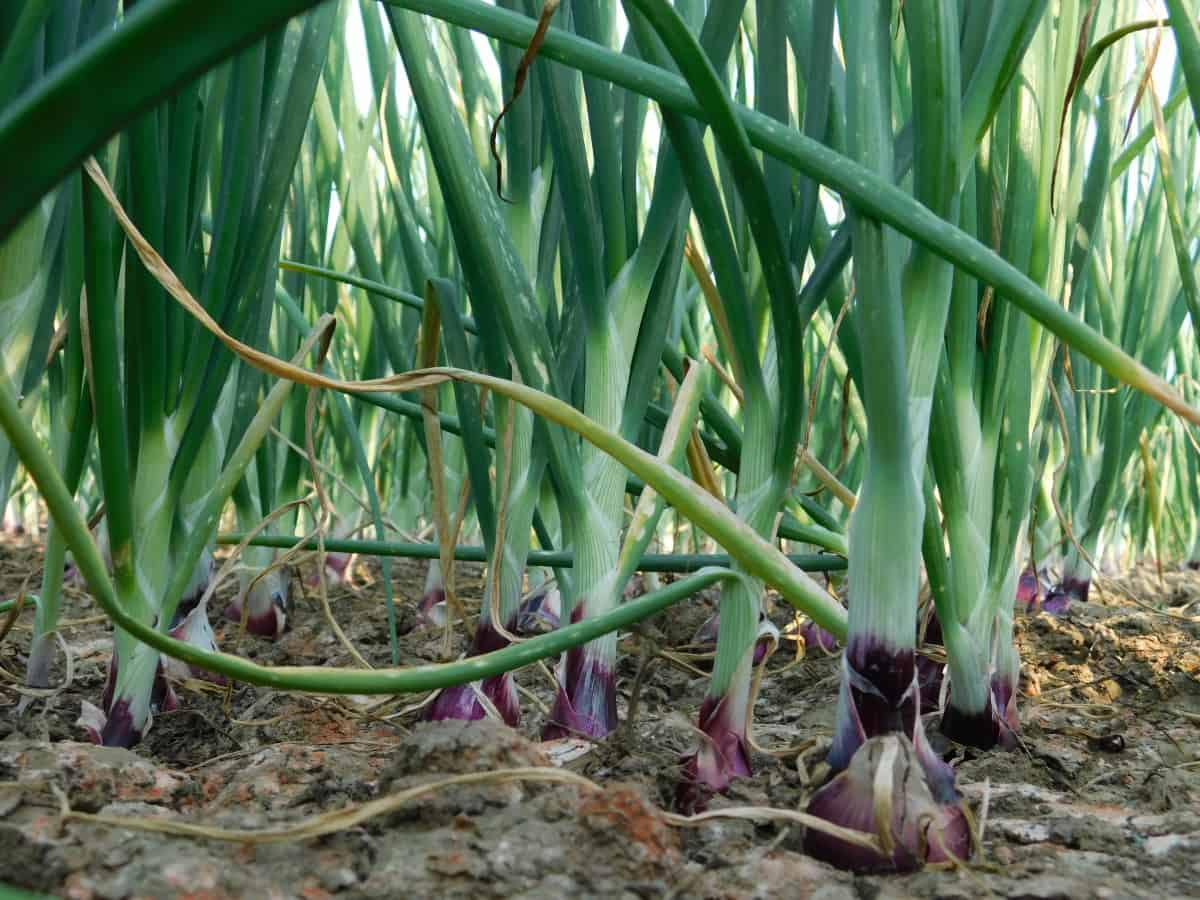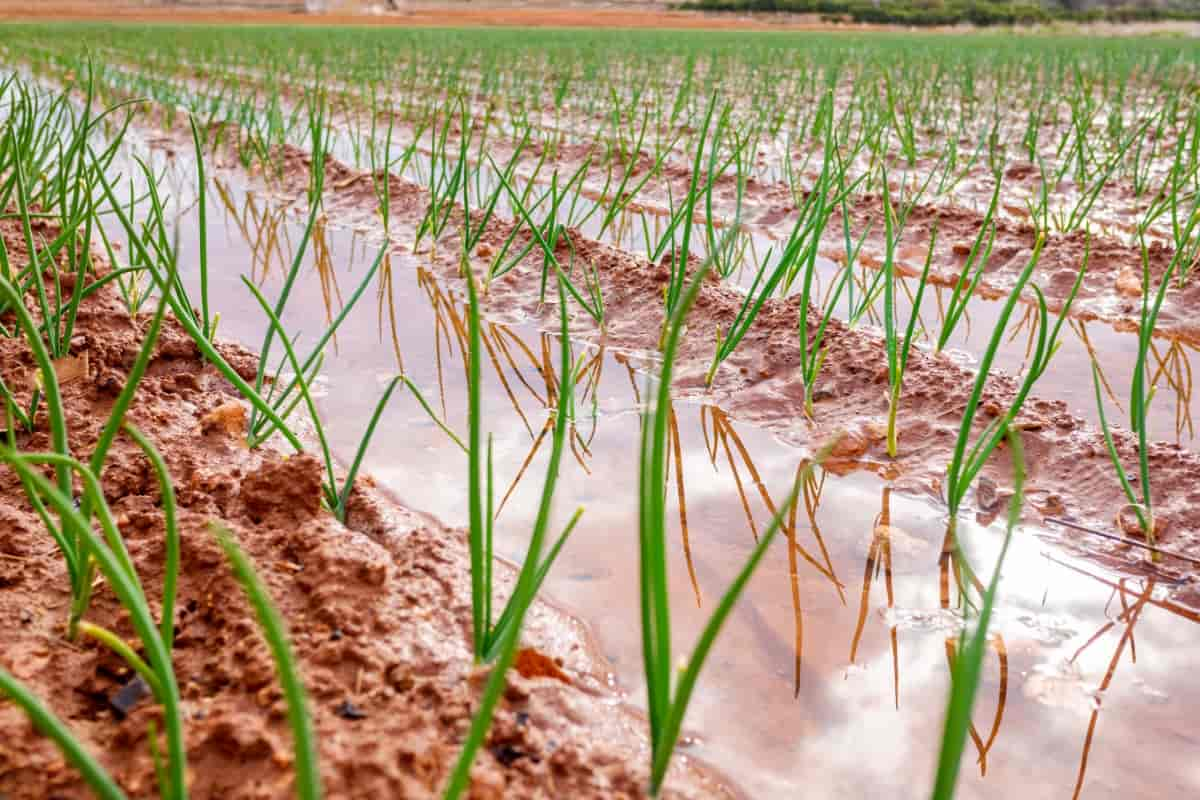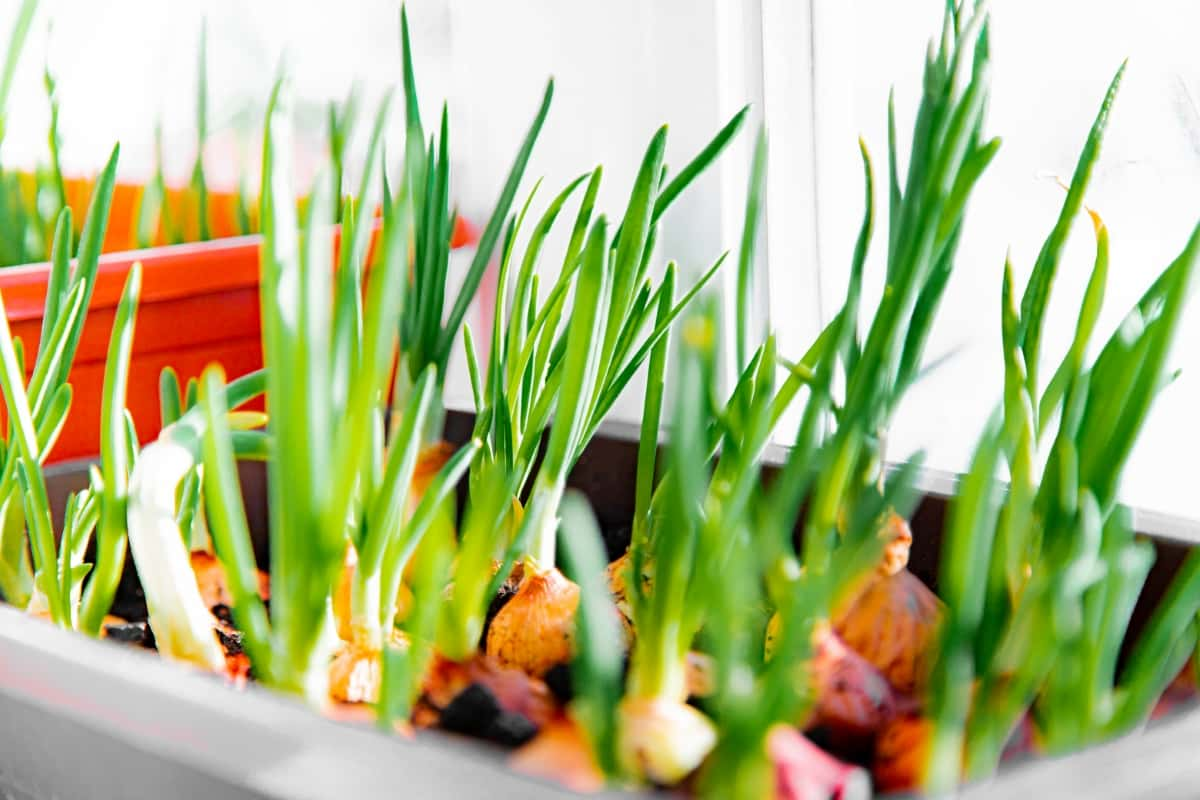Onion, a prominent member of the Allium family, is among the most widely grown and utilized vegetables across the world major concern affecting onion production is the susceptibility to numerous fungal diseases, which can devastate yields if not appropriately managed. This article will explore common fungal diseases in onion plants and their management, prevention, and treatment intricacies.

Fungal Diseases in Onion Plants
Common Fungal Diseases in Onion Plants and Their Management
Onion crops are vulnerable to various fungal diseases, including Downy Mildew, Purple Blotch, and White Rot. Downy Mildew is characterized by fluffy, white fungal growth on the leaves of the onion plant, while Purple Blotch manifests as sunken, purple lesions. On the other hand, White Rot is indicated by a soft, watery rot of the bulb, usually accompanied by a white fungal growth.
Managing these fungal diseases in onion plants requires a combination of preventative and control measures. Crop rotation can significantly reduce disease incidence by disrupting the fungi’s lifecycle. Other management practices include disease-free seeds and plants, proper field sanitation, and adequate plant spacing to facilitate airflow and reduce humidity. Moreover, applying appropriate fungicides at the right time can help control disease spread and minimize crop loss.
Preventing and Treating Fungal Infections in Onion Crops
Prevention is better than cure, especially regarding fungal infections in onion crops. Regular monitoring is a key strategy in disease prevention, enabling early detection and timely intervention. Field sanitation is essential to eliminate infected plant debris that could harbor fungal spores. Covering the soil with plastic mulches can also prevent soil-borne fungi from reaching the plants.
Timely intervention is essential when infections arise, and it is vital to promptly address them. It is necessary to eliminate and dispose of infected plants. Fungicides are commonly employed for treating fungal infections in onion crops, with the choice and method of application determined by the particular disease at hand. Additionally, certain biological control agents, such as beneficial fungi and bacteria, can be utilized to combat fungal pathogens.
Signs and Symptoms of Fungal Diseases in Onion Plants
Identifying fungal diseases in onion plants early can significantly affect disease management. Various signs and symptoms can indicate a fungal infection, such as leaf spotting, blight, or mold. Leaf spots typically appear as small, circular areas of discoloration, whereas blight is characterized by plant tissue’s rapid browning and dying. Mold, a common symptom of several fungal diseases, appears as a fuzzy growth on the plant.
In case you missed it: How to Grow Spring Onions in Greenhouse: A Step-By-Step Guide for Seed to Harvest

Onion bulbs can also show signs of infection, including soft rot, discoloration, and a foul odor. Additionally, fungal diseases can lead to stunting or plant wilting, indicating a more systemic infection. Regularly inspecting your crops for these signs and symptoms can aid in the early detection and management of fungal diseases.
Effective Fungicides for Controlling Fungal Diseases in Onions
Fungicides play a critical role in managing fungal diseases in onion crops. They help control the spread of the disease and reduce the impact on yield. Broad-spectrum fungicides, effective against various fungi, are often used as part of a disease management strategy. Some of the most effective fungicides for controlling fungal diseases in onions include Mancozeb, Chlorothalonil, and Copper-based fungicides. Use these fungicides in accordance with the instructions provided by the manufacturer and comply with local regulations.
Organic Methods for Managing Fungal Diseases in Onion Cultivation
For those seeking environmentally friendly alternatives, various organic methods can effectively manage fungal diseases in onion cultivation. Crop rotation is a natural method that reduces disease incidence by interrupting the lifecycle of fungal pathogens. Intercropping with plants that deter or resist the same fungal diseases can also help protect the onion crop.
Compost and organic mulches can improve soil health, enhance its structure, and promote beneficial microorganisms that compete with pathogenic fungi. Biofungicides, derived from natural sources such as bacteria or fungi, can also control fungal diseases. They operate by out-competing the disease-causing fungi for resources or producing substances that inhibit their growth.
Due to their antifungal properties, garlic, and chamomile teas have traditionally been used as natural fungicides. Similarly, neem oil, extracted from the neem tree’s seeds, has proven effective against several fungal pathogens. These organic methods provide sustainable alternatives to synthetic fungicides, reducing the environmental impact of onion cultivation.
Fungal Diseases Affecting Onion Bulbs and Leaves
Fungal diseases in onions commonly affect the leaves and bulbs, the plant’s primary organs. Diseases like Downy Mildew, Purple Blotch, and Rust are common on the leaves. Downy Mildew is identifiable by a fluffy, white growth on the leaves surface, Purple Blotch by sunken, purple leaf lesions, and Rust by pustules that produce an orange-red spore mass.
Diseases like White Rot, Basal Rot, and Black Mold can infect onion bulbs. White Rot causes a soft, watery bulb decay, often with white fungal growth. Basal Rot results in discoloration and decay of the bulb’s base, while Black Mold manifests as black, sunken spots on the bulb’s surface. Recognizing these diseases and their symptoms can expedite their management and mitigate crop losses.
Best Practices for Preventing Fungal Infections in Onion Farming
Preventing fungal infections in onion farming involves a comprehensive approach, beginning with proper site selection and preparation. Choosing a site with good drainage can help reduce soil moisture, a major factor in developing fungal diseases. Similarly, proper soil preparation, including deep plowing and incorporating organic matter, can improve soil structure and health, reducing disease incidence.
In case you missed it: A Step-by-Step Guide for Growing Onion/Leek Microgreens: DIY in Simple Way from Seeds in Containers

The use of disease-free seeds and seedlings is another crucial preventative measure. Infected seeds can introduce fungal pathogens to the field, leading to early disease outbreaks. Planting at the right time and appropriate intervals can also help prevent disease spread, allowing air to circulate freely between plants and reducing humidity. Regular field sanitation, involving the removal and disposal of infected plant debris, can help minimize fungal inoculum in the field.
Crop rotation with non-host crops disrupts the life cycle of fungal pathogens, reducing their numbers in the field. Lastly, applying fungicides or bio fungicides at the right time can help keep fungal diseases at bay. Preventing fungal diseases in onion farming is a continual process that requires diligence and an integrated approach. By implementing these best practices, farmers can mitigate the risks of fungal infections and ensure their onion crops’ healthy growth and high yields.
Conclusion
Fungal diseases significantly threaten onion cultivation, often leading to decreased quality and yield. Understanding the common fungal diseases affecting onions, their signs and symptoms, and their management strategies is fundamental for successful farming.
- Feed Your Flock for Less: Top 10 Tips to Save on Chicken Feed
- Ultimate Guide to Ossabaw Island Hog: Breeding, Raising, Diet, and Care
- Hatching Answers: The Top 10 Reasons Your Chickens Aren’t Laying Eggs
- Eggs and Economics: Breaking Down the Cost of Raising Backyard Chickens
- Defend Your Greens: Proven Methods to Keep Iguanas Out of Your Garden
- Ultimate Guide to Cinnamon Queen Chicken: A Comprehensive Guide for Beginners
- Ultimate Guide to California Tan Chicken: Breeding, Raising, Diet, Egg-Production and Care
- Ultimate Guide to Marsh Daisy Chicken: Breeding, Raising, Diet, and Care
- 10 Types of Chicken Farming Businesses You Can Start for Profits